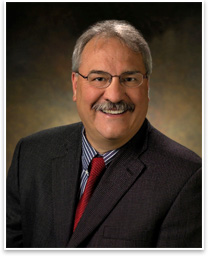
 CITIZEN ARCHITECT CITIZEN ARCHITECTJack L. Fischer, AIA Summary: Jack L. Fischer, AIA, was appointed Wisconsin’s Secretary of the Department of Commerce by Governor Jim Doyle on November 9, 2007. The father of three and native Wisconsinite, Fischer began his first design and construction company while still in high school. Prior to his appointment, Fischer was president and CEO of The Fischer Group Companies, Fischer Investors Inc., and J.L. Fischer Inc. Favorite Wisconsin building: The state capitol of Wisconsin [designed by George B. Post & Sons] in Madison is one of the most beautifully restored buildings in the United States. It’s a fantastic building. Current read: I’m currently reading a book about venture capital and angel financing for entrepreneurs. It’s called Angel Financing for Entrepreneurs: Early-Stage Funding for Long-Term Success, by Susan Preston. Education: I received my BArch and masters of architecture and urban planning at the University of Wisconsin-Milwaukee School of Architecture and Urban Planning in 1976 and 1978. I received the Young Distinguished Alumni Award from UWM and, five or six years later, received the Distinguished Alumni Award. Interest in architecture: My father was a builder and a developer. He started our family business in 1949. I remember from my very early days following my father to all the different construction sites. I worked in the summertime in construction and that hands-on exposure—mentored by my father and a couple of other wonderful colleagues—really gave me my passion for architecture, building, construction, and development. Professional background: I started my first design and construction company when I was in high school and evolved from that into my formal education. Because I had this business that I started, I selected the architecture program at the University of Wisconsin-Milwaukee, which had a really wonderful, flexible program. I started that firm and grew the business, graduated, and continued with my architecture, engineering, planning, and development company during very difficult times from an economic perspective. In 1978 and ’79, we had 21-percent interest rates. There was very little pure design work going on, so I stepped out and pursued a number of development projects. That gave me a wonderful background, having not only the design, engineering, and construction management expertise, but also the development piece, which grew and flourished for our companies. As the companies grew, I ultimately merged with an entity by the name of J.P. Marathon Inc. We were a full-service engineering, architectural planning, construction management firm, and we worked in 25 states and 15 foreign countries. We grew that business in the U.S. with a number of wonderful partners and expanded the company. We ended up with offices in five different states and ultimately merged with an international company called the Poyry Group. The Poyry Group today has about 5,000 designers in 40 countries around the world, and I was a part of that leadership group for more than 22 years. We did a lot of wonderful world-class commissions throughout the U.S. and many other spots. I was fortunate to work as the principal-in-charge on an exciting project in Jaguariuna, Brazil. It was the Motorola regional campus, which included 1.5 million square feet of manufacturing, research, development, Motorola University, administrative, athletic, and a totally integrated R&D campus with manufacturing. It was over a three-year period, and we had to bring together a consortium of firms and collaborate between our Wisconsin office, our office partners in Brazil, and people from other countries in the program. It was a very exciting collaboration. I worked on a broad spectrum of research, development, industrial, commercial, and offices in my career of design work. Becoming Secretary of Commerce: I had the good fortune of meeting Wisconsin Governor Jim Doyle five or six years ago when he asked me to serve on a conference called the Wisconsin International Trade Council because of my international experiences. This is a committee group that helps to strategize and grow businesses from Wisconsin throughout the rest of the world. Eventually I was invited to join the cabinet and use my 32 years of private-sector experience as the new commerce secretary for the State of Wisconsin. I’m very proud to be a part of Governor Doyle’s administration. Architect as commerce secretary: As an architect in this commerce secretary role, I’ve been able to use my design, construction, development, siting, and consulting expertise to bring a private-sector view to all of the wonderful pro-growth initiatives that we have under Governor Doyle. In addition, the Commerce Department’s Buildings and Safety Group in Wisconsin is responsible for all the plan reviews. So, I as an architect am responsible for all of the architectural and engineering leadership that is a part of our plan and specification review process, which correlates to my experience as an architect beautifully. My history and relevance to the economic development piece is also very strong from working on both sides of the table. We also are responsible for controlling our energy and oil resources throughout the state. Under the initiatives of economic growth, we have all categories—from housing to 15 different state packages that help grow local businesses and expand new businesses. We have five overseas offices that are connected to the State of Wisconsin to help us with our international growth and our international agenda. I’ll be traveling next week on a trade mission with 10 outstanding Wisconsin companies to continue to connect Wisconsin with Ireland, the U.K., and many other places in the world. We have three trade missions a year, of which the governor usually participates on two. We also have a number of mini missions that we go on, as well as a number of outreach programs that help with export and international connectivity and bring in new venture funds to the State of Wisconsin, which is also very important. Key initiatives during tenure
|
||
Copyright 2008 The American Institute of Architects. All rights reserved. Home Page |
||
news headlines
practice
business
design